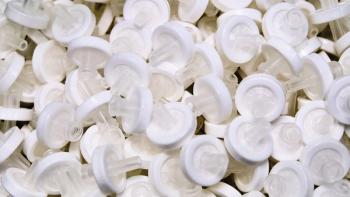
- BioPharm International-11-01-2012
- Volume 25
- Issue 11
A 25-Year Retrospective on Protein Recovery through Membrane Filters
This month, Jerold Martin of Pall Life Sciences takes a look at protein recovery through direct-flow microporous membrane filters over the past 25 years.
Throughout BioPharm International's 25th anniversary year, we will be looking back at articles published in the first volume of the journal. This month, Jerold Martin of Pall Life Sciences takes a look at protein recovery through direct-flow microporous membrane filters over the past 25 years.
Protein binding to membrane filters was a "hot topic" back in 1988. While biologicals were routinely sterile filtered through Nylon, cellulose ester, or PVDF membranes without notable losses, concerns were raised over reports of reduced cell culture response in multi-well plates filled with sequentially filter-sterilized culture media using 25-mm membrane syringe filters. Although inhibition from initial filter leachables was not ruled out, the primary cause of poor cell growth in initial filled wells was attributed to binding and depletion of nutrient protein growth factors. Consequently, process developers began focusing on initial binding of proteins to membranes in large-scale protein filtration processes. Bench-scale data were often misleading because it was frequently misunderstood that protein binding to microporous membranes is non-specific and will vary with protein type, concentration, pH, and other formulation components. Membrane filters do not have a finite "protein binding capacity" independent of formulation and process conditions.
Some membranes that incorporate surfactant wetting agents and are not preflushed showed low initial protein binding that can increase in later throughputs when the wetting agent (an initial leachable) is washed out. Other membranes showed relatively high protein binding during initial throughputs, but soon saturated so that the impact on total protein recovery in bulk fills was negligible. The value of even microgram quantities of proteins potentially lost to binding on a membrane became significant as costly biotech protein drugs at low concentration were introduced.
The 1988 paper, "Protein Recovery from Effluents of Microporous Membranes," cowritten with Richard L. Manteuffel, explained the dynamics of protein binding to membrane filters and directed process developers to more appropriate evaluation protocols. Many researchers in the 1980s were evaluating protein binding by making up a single concentration of a model protein in a model buffer, then assessing loss after only a few mLs of throughput through a small membrane disc and applying their conclusions to selection of process scale filters. While this protocol will effectively distinguish "high" from "low" protein binding membranes, it is misleading because binding can vary significantly for other proteins at other concentrations, or at different pHs in different buffers. The protocol missed that binding is transient once the membrane saturates, typically within 10–20 mL through a 47-mm disc.
Today, the dynamics of protein binding are better understood, and saturation dynamics are routinely measured for specific target protein formulations. New membrane filters used today for process-scale protein filtration, both for serum-free culture media and dilute-protein biotherapeutics, feature extremely low non-specific protein binding surfaces. Most of these surfaces, either on polyvinylidene fluoride or polyethersulfone membranes, are covalently grafted from a mixture of acrylate monomers to form a hydrophilic, non-ionic polyacrylate surface on the internal pores of the membrane. These surfaces, comparable to size exclusion chromatography media and low protein binding contact lens materials, serve to minimize non-specific protein binding to membranes even on initial throughputs, which can be important when filling containers directly through membrane filters without batch pooling.
Articles in this issue
about 13 years ago
BioPharm International, November 2012 Issue (PDF)about 13 years ago
The Transformation to Process-Centered Organizationabout 13 years ago
Considerations for Scale-Up of Stem-Cell Culturesabout 13 years ago
Creating a Holistic Procurement Systemabout 13 years ago
Product Characterization: A Primerabout 13 years ago
Assay Development and Method Validation Essentialsabout 13 years ago
Discovery Pipeline: Improved Delivery of RNA Vaccinesabout 13 years ago
How to Manage Effective Leadership when Change is the Only Constantabout 13 years ago
Product Analysis Key to Biosimilar DevelopmentNewsletter
Stay at the forefront of biopharmaceutical innovation—subscribe to BioPharm International for expert insights on drug development, manufacturing, compliance, and more.





